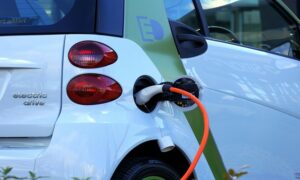Most of our global annual greenhouse gas emissions — roughly 70% — are attributed to energy consumed in the form of electricity, fuel, and heat. Rethinking how we produce energy is one of the major challenges in tackling climate change, especially considering the energy density of our current fuel sources.
For much of human history, we relied on sources with low energy densities, like wood, for fuel. But with the rise of the Industrial Revolution, we moved to sources with higher energy densities, like coal, and then to sources with even higher energy densities, like oil and gas. Energy density matters because the more energy is stored per unit of weight or volume, the better the efficiency of the application typically becomes. This is especially relevant in industries like aviation where carrying fuel with low energy density is inconvenient.
However, the adoption of fossil fuels as energy sources had a significant drawback: their CO2 emissions accelerated climate change. We need to shift towards more sustainable energy sources. Some of these alternatives (i.e. wind and solar) have lower energy densities compared to fossil fuels, and require a lot of surface area per unit of energy produced. Now, for the first time in history, we are going backwards in terms of efficiency because we incorporated more parameters, like environmental impact, into the energy equation than just energy density.
This trend is not limited to energy. To reach net zero, we have to rethink everything we do. After 200 years of relying on the same technologies and processes, it’s time to re-imagine the future. Here, we highlight five climate technologies that were neglected in the past and now show great opportunities.
Water electrolysis
Historically, grey hydrogen has been produced by reforming methane (i.e. natural gas). This leads to direct emissions, as CO2 is a byproduct of this process. Alternatively, hydrogen can be generated in a green way through water electrolysis. This technology has existed for centuries but did not become commercially interesting until recently due to a growing demand for green hydrogen. With the increasing interest in building a hydrogen-based economy, we will have to produce a lot more hydrogen than we do now and it has to be greener, increasing the interest in water electrolysis.
CO2 valorisation
CO2 valorisation is a collection of various technologies that transform CO2 into valuable products, such as fuels and chemicals. Some of these technologies have already existed for over a century, like the conversion of CO2 into methane. Although this process is energy intensive, the technology has seen a surge in interest due to the increasing natural gas prices and its relevance in biogas upgrading. From our CO2 valorisation deep dive, it became clear that CO2 valorisation makes sense from a commercial standpoint when (1) the reaction product is addressing a massive market, such as e-fuels, and/or (2) the reaction product has a high price per kilogram, such as carbon nanomaterials.
Recycling technologies
Recycling technologies have gained momentum in the last few years due to growing concerns about the environmental impact of waste disposal, and the energy intensity of raw materials production, which accounts for about 30% of the total energy consumption worldwide. Raw materials demand will skyrocket in the coming decade to enable the energy transition. Rare earth elements, such as neodymium, are used in permanent magnets, essential components of wind turbines and electric vehicles. China is currently responsible for 85% of rare earth element processing and 92% of permanent magnet production. With anticipated supply chain shortages and geopolitical risks, recycling technologies for rare earth elements are slowly gaining traction.
Methane capture and upgrading
Methane is a potent greenhouse gas with 84-87x the global warming potential that CO2 has. This is why methane produced as a byproduct in industrial processes is often burned to prevent it from being released into the atmosphere. Ironically, methane is transformed into CO2 in the flaring process. In 2022, 139 billion cubic metres (bcm) of natural gas were flared, which is about 1.5x Germany’s annual natural gas usage. In principle, capturing, utilising or upgrading methane is more expensive than flaring. Again, with the natural gas price increasing and climate policies tightening, the level of interest in this technology is rising.
Nitrogen-based economy
Our current economy is fundamentally built on burning carbon-based fuels. The energy contained in hydrocarbons, such as diesel and kerosene, is released when chemical bonds in the hydrocarbon molecules are broken. However, our economy could alternatively be built on nitrogen-based fuels, such as ammonia. The concept of breaking chemical bonds in molecules to release energy would remain the same, but without releasing CO2 into the atmosphere. This is gaining more traction now, as large engine builders have announced the development of shipping engines that will run on ammonia.
As we look to the future, it’s clear that there is no shortage of creative solutions waiting to be implemented. By re-engineering the technologies of the past we can work towards a more sustainable future. Let’s roll up our sleeves and get to work – the planet is counting on us.



































